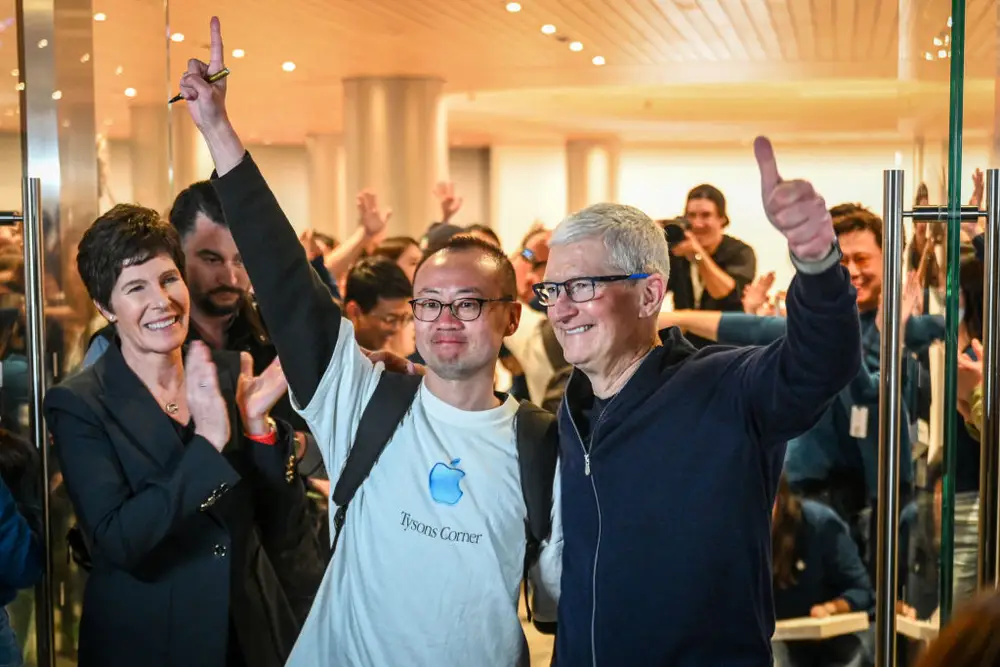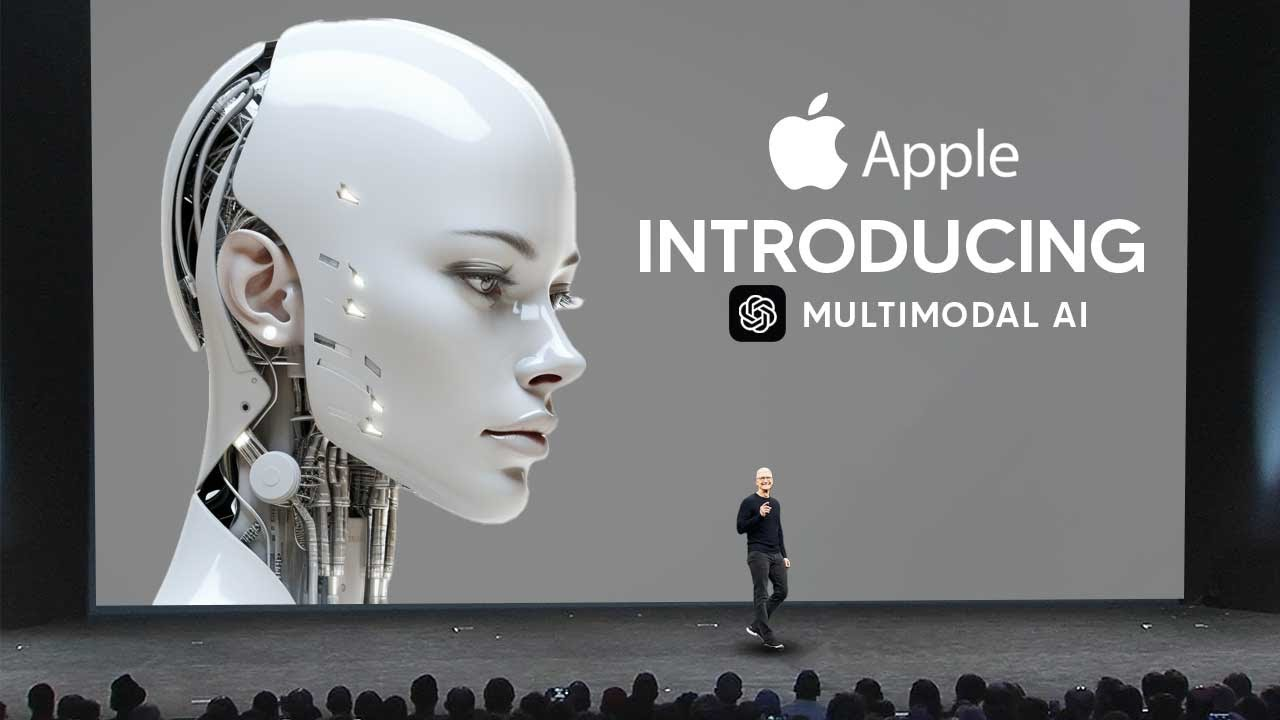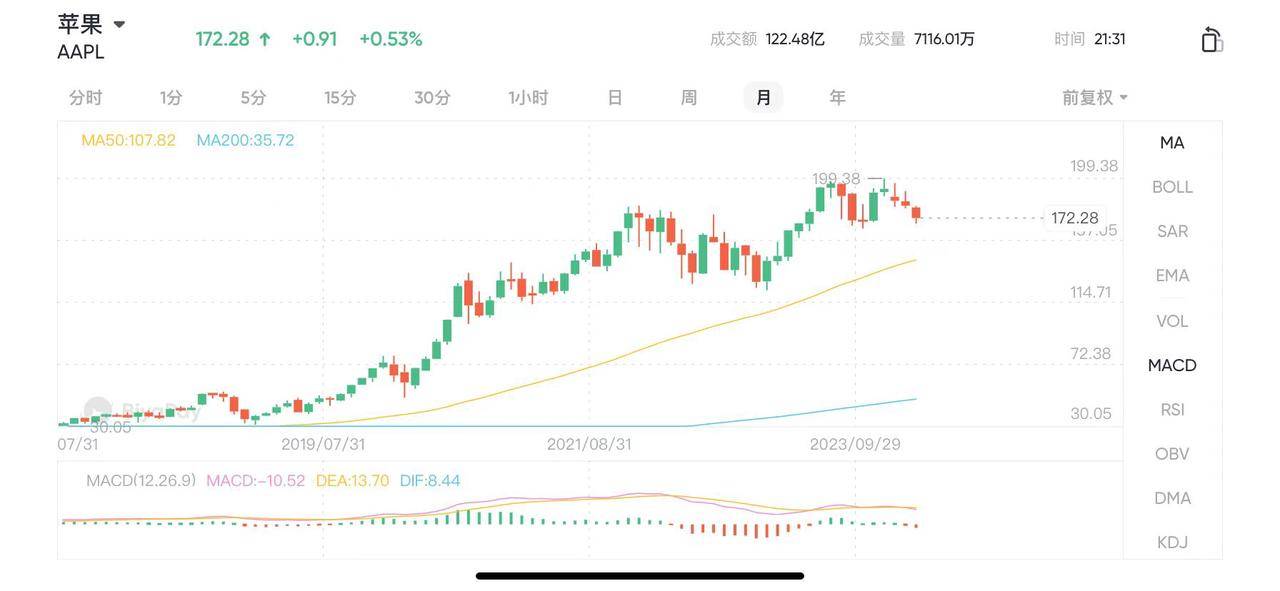- Remittance
- Exchange Rate
- Stock
- Events
- EasyCard
- More
- Download
Apple's Stock Price Plummets! The Last Straw for US Stocks?
In the midst of a crowded opening, Apple’s Jing’an retail store launched, with Apple CEO Tim Cook appearing in person for the unveiling. Located in Shanghai, it is the second-largest Apple retail store globally and the largest in Asia.

Hours later, Apple’s stock price took a sharp dive, closing at $171.37 per share, down 4.09%, wiping out $112.7 billion in market value overnight, approximately 811.6 billion yuan.
Nearly everyone was “expecting” a major fall in US stocks, with many speculating on when and how much it would fall.
Could this “plunge” in Apple’s value trigger a chain reaction, causing a collective dive in US stocks?
Contrary to this, the major US stock indexes continued to reach new highs amid predictions and reports of a market crash.
Despite the hot market, there are mixed feelings, with companies like Tesla and Apple significantly underperforming among the once “Tech Giants.”
In 2024, Tesla’s stock plummeted over 32%, and Apple also fell more than 10%, in stark contrast to the rising stock indexes.
There is a global “expectation” for a major US stock market crash.
It’s more about the fear of heights and the regret of missed opportunities than an “expectation” of a US stock crash. Investors look forward to a “bubble burst” or a market “backing up to pick up passengers” after seeing the indices rise and stocks surge against common sense.
From multiple perspectives, the US stock market indeed has a crazy side, with major tech companies still maintaining rapid growth in performance, but their overall valuation is at a historic high, and the same is true for other stocks.
However, the US stock market also has a healthy aspect: no matter how prestigious a company is, if its growth rate declines, its stock immediately falls behind, as evidenced by Tesla and Apple.
Investors may hope for the market to “back up,” but the declining prices of Tesla and Apple stocks haven’t attracted much buying interest; instead, more capital is fleeing.
Overall, the market has focused on a single trading theme for a while, which remains the development of the artificial intelligence industry, with Nvidia’s financial reports not yet disappointing investors.
Interest rate cuts are influenced by the Federal Reserve’s expectation management capabilities and have not yet become a significant factor in trading.
Currently, with bond prices falling, regional bank liquidity crises, and the upcoming elections, the Federal Reserve is unlikely to continue its hawkish monetary policy.
However, facing a hot stock market, Powell can only reiterate maintaining high interest rates for a long time, especially as recent inflation accelerates, particularly in employment data, further lowering expectations for rate cuts.
The Federal Reserve itself does not want the stock market to remain hot, making it an important entity that anticipates a major US stock market crash.
Apple, not a big problem?
Apple’s sustained decline this year is due to many reasons, the most fundamental being that the company’s performance is no longer growing rapidly.
In the Chinese market, due to fierce competition from local brands, Apple’s revenue in the last quarter of the previous year fell by 13% year-on-year, and the global personal computer market’s weakness also negatively affected the company’s performance.
In early February, Apple’s first-quarter performance guidance fell short of expectations, with management hinting during the earnings call that first-quarter revenue would decline by about 5% year-on-year to around $90 billion, with iPhone revenue possibly falling nearly 10%.
Additionally, in the highly competitive electric vehicle market, Apple announced the abandonment of its original car manufacturing plans, discontinuing a project that involved hundreds of people, spanned over a decade, and cost hundreds of millions of dollars.
While this news does not directly affect Apple’s performance, it indirectly shows that Apple’s following of the previous trend was unsuccessful.
As Apple announced its withdrawal from car manufacturing, it shifted its focus to generative artificial intelligence, raising market skepticism about its development in this field after a long and unsuccessful venture into new energy vehicles.
On March 2nd, Goldman Sachs removed Apple from its “Conviction Buy” list in the US, which includes 20 to 25 stocks Goldman Sachs considers most worthy of buying.
Media analysis suggests that Apple’s lack of a clear artificial intelligence strategy might be one reason for its removal.
To date, Apple has not disclosed much about its artificial intelligence strategy, hinting at announcing some AI-related news at the developers’ conference in June.
Many investors have turned to Microsoft and Nvidia due to Apple’s lag in artificial intelligence.

The direct trigger for Apple’s recent plunge was the antitrust lawsuit filed by the US Department of Justice against Apple, accusing it of monopolizing the smartphone market by controlling Apple products’ hardware and software, harming consumers, developers, and competitor companies.

The Department of Justice stated, “Apple’s extensive exclusionary conduct makes it harder for Americans to switch smartphones, stifles innovation in apps, products , and services, and imposes extraordinary costs on developers, businesses, and consumers.”
The lawsuit claims that every step Apple takes is designed to build and fortify its smartphone monopoly. By leveraging its monopolistic power, Apple extracts more money from consumers, developers, content creators, artists, publishers, small businesses, and retailers, thereby fueling its “astronomical valuation.”
Based on previous antitrust lawsuits filed by the US government against large companies, this lawsuit is unlikely to have a significant impact on Apple’s long-term development. Instead, it further highlights Apple’s strong market position.
As Warren Buffett’s latest major investment, Apple increasingly exhibits the characteristics of a traditional value stock. Though it has passed its high-growth phase, Apple still commands a large market, high consumer loyalty, strong brand attachment, and robust, stable cash flows, aligning with Buffett’s “moat” theory of a dominant company with strong market pricing power.
This might explain why, despite being removed from the “Conviction Buy” list, Goldman Sachs still maintains a “buy” rating for Apple with a target price of $232.
Goldman Sachs analysts state, “We believe Apple’s growing installed base, long-term growth in services, and product innovation are sufficient to offset the cyclical disadvantages of declining product revenue.”
Searching for “Apple’s stock plunge” online reveals that such news surfaces periodically. However, when accessing the BiyaPay US stock platform, known for low transaction fees, security, and the ability to short sell, and entering “Apple” or “AAPL” in the market section and extending the timeline on the monthly K-line chart, it is evident that Apple’s stock price has reached the $170 to $200 range through various “plunges.”

Apple may no longer be the rapidly growing tech giant, but it remains a good target for value investing.

























